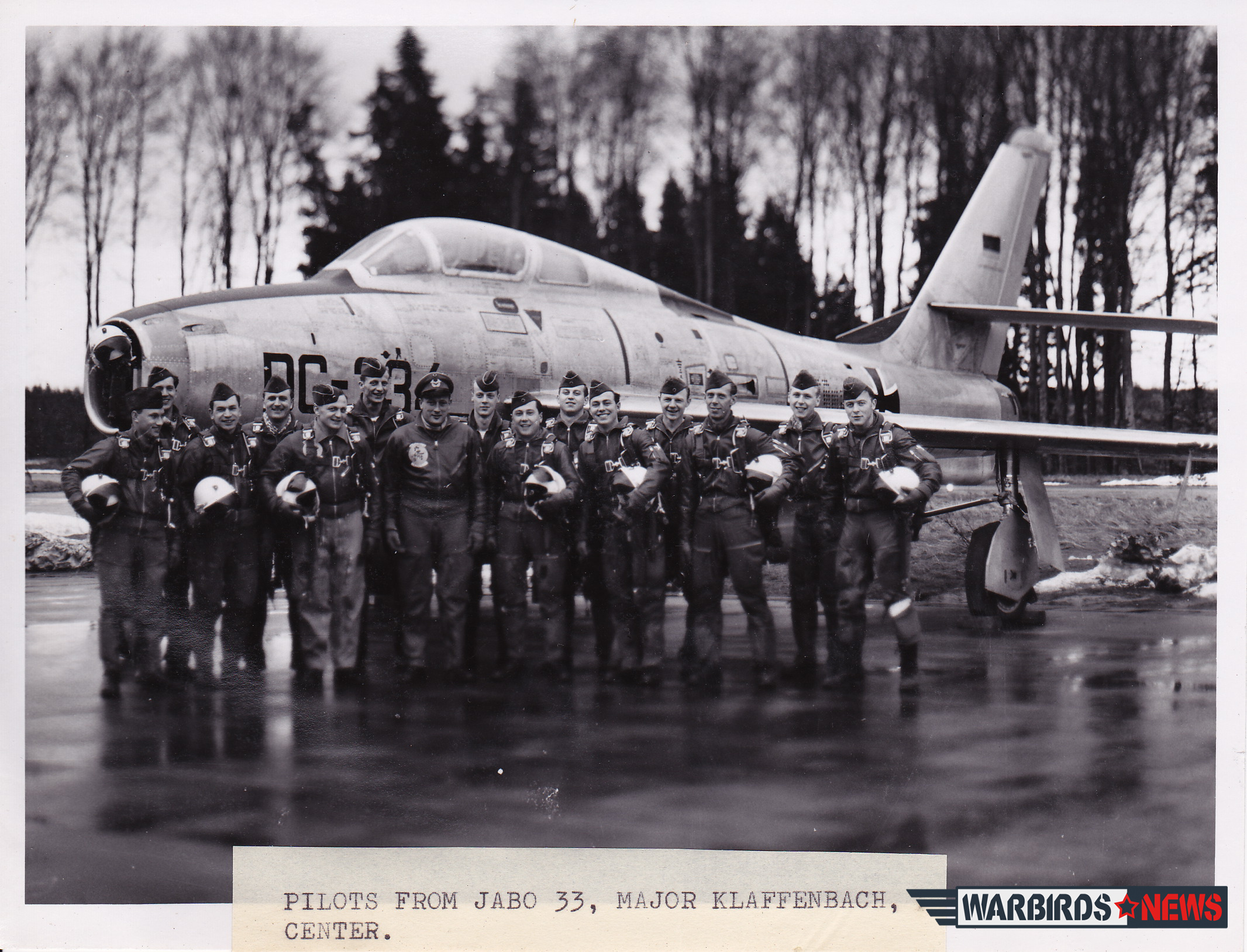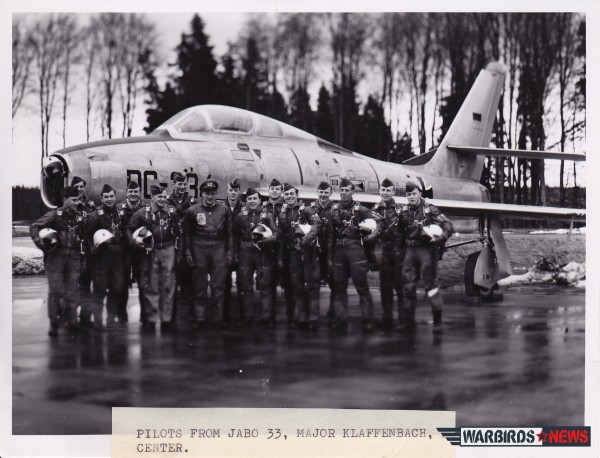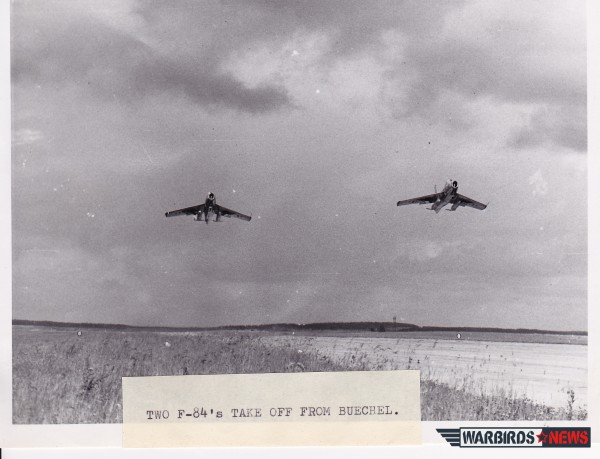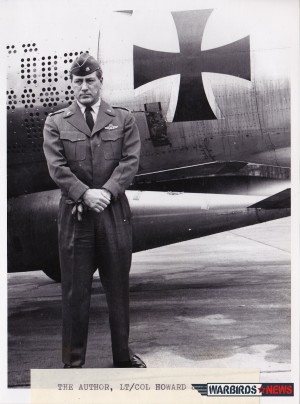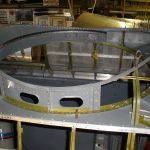In the Luftwaffe, pilots are subject to the laws of the civilian courts while flying. When they create a disturbance by low flying or cause damage as a result of a crash or any other mishap they can be brought to trial in the civilian courts. This is not true in the United States Air Force as in most cases the military courts will take precedence and, except for extreme cases of gross negligence, where pecuniary liability is found by the military courts. The federal government pays all damage claims posted by civilians. Sometimes considerable care has to be administered in the German Air Force to avoid violations, as much of the training is conducted at low level. Due to the high density of population in West Germany, it is very difficult to draw up routes which avoid all congested areas.
Another situation which demands constant attention is that of flying in the limited airspace in West Germany. The pilots have to be particularly alert because of the close proximity to the Iron Curtain. If they should accidentally fly over it a serious international incident could result, or, even worse, they could be forced down and they and their aircraft be interned. When I was first assigned to Jabo 33, Captains Moerdich and Schultze-Raul were given the task of acquainting me with the unit aircraft and the local flying procedures, which are quite different from those I was accustomed to in the United States. After being at Beuchel only two weeks, I was sent to Munich to ferry a T-33 back to our home base. Since I was not at this time too familiar with air traffic procedures in Europe, I was happy to have Lieutenant Weber from the 2nd Squadron along, particularly after checking the route and finding that it was very close to the Iron Curtain.
The pilots of Jabo 33 spend many hours in the Squadron briefing room daily, studying such things as navigation and weapons delivery, acquiring a thorough knowledge of the aircraft, which, in the exacting job of flying modern jets, may make a lot of difference some day.
The German pilots are in the position of being in great demand at this time and will be for some time to come. Due to the accelerated build up, the German Air Force has barely been able to train pilots as fast as they are needed.
Since Buechel is in a fairly rural part of Germany, most of the younger pilots who are single are not too enthused about being stationed there. They would rather be in a location more adjacent to larger cities where there is more night life and girls. The German Air Force has not reached the stage of developing recreational facilities as the United States Air Force has. They do not have movies, gymnasiums, and other such facilities on their bases as we do. Consequently, there is little to do around Buechel during off duty time.
During my stay in Buechel I have talked to many officers who have received training in the United States. With few exceptions, they enjoyed their stay there and were very impressed with life in the U.S.A. Of course, one of their main objections was the higher prices, which are considerably higher than most Europeans are used to.
Most of the pilots find that the flying weather at Beuchel is considerably different from that which they encountered while training in the States. Particularly at Beuchel, which is noted for its low ceilings and visibilities, the weather is quite different from that in which they learned to fly at Williams and Luke Air Force Bases in Arizona. To become adjusted to this most of the pilots take a refresher course in weather flying at Furstenfeldbruck near Munich before joining a combat unit.
In July 1960 Jabo 33 had an Open House. It was held on a Sunday and included an Air Show which lasted all afternoon. The show consisted of all types of spectacular flying, including acrobatic teams from Greece, Italy and the United States Air Forces in Europe Sky Blazers, with individual aircraft from other nations. Even though Buechel is located in a rural area, there were one hundred and thirty thousand spectators who attended. It was one of the most impressive air shows that I have had the pleasure of witnessing.
Since Jabo 33 is equipped with American built aircraft, two American technical representatives, Mr. Robert Hamfeldt and Mr. Rene Eppi of Republic and Curtis Wright, respectively, are stationed here. They were originally hired by the United States as part of the grant aid program; but since this program is terminated, they work directly for the German Government.
One of the big problems that Colonel Krupinski has to face is that of the pay scale of both his officers and enlisted men, which is below the standard of the German rising economy. For this reason he has a difficult time acquiring and keeping qualified technical personnel in the service. They can get more money on the outside, this is also true with the pilots.
A part of the pilots are non-commissioned officers while others are officers. Since some are officers and some are not, and they are doing the same job, this does not promote harmony. The German Air Force insists on a certain educational level for its officers. it is difficult to recruit all of the pilot trainers with this level of education; therefore, some of them end up being Sergeant Pilots.
Jabo 33 is a spirited and dedicated unit. They have come a long way since their activation. Some day in the not too distant future they, as most units in the Luftwaffe, will receive the latest version of the F-104 Starfighter. With this combination, I feel sure that they will take their place in the NATO line-up as one of its most effective units.
I for one am glad that Colonel Krupinski and Jabo 33 are on our side, and, if the chips are really down, I know they can be counted on to make their mark for freedom.
To find out more about Howard “Scrappy” Johnson click HERE.
If you want to buy his biography “Scrappy: Memoir of a U.S. Fighter Pilot in Korea and Vietnam” visit Amazon.
Click on the book cover to buy it on Amazon.







